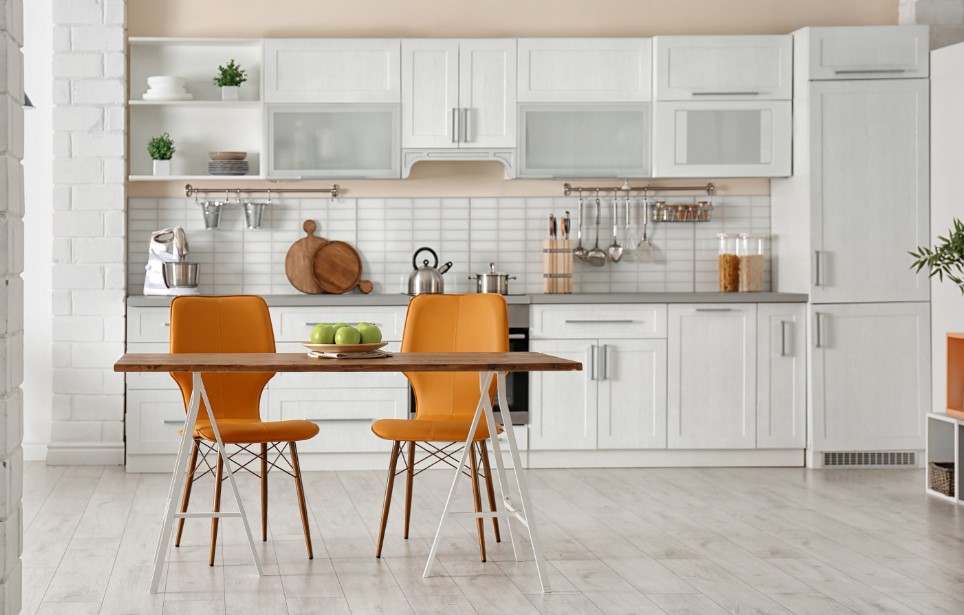INTERIOR DESIGN: CREATING THE PERFECT KITCHEN

The kitchen should be the pièce de résistance of any home décor undertaking – after all, it is the most popular room for gatherings. Kitchen designs should be largely personalised to lend the room a human feel which reflects the designer themselves. Colour contrasts and clean palettes create a sense of brightness and cleanliness. Whether by ensuring that windows are unobstructed, installing adjustable light sources (such as a chandelier or lamp) or simply by adopting lighter tones, the designer can create a room which is inviting and open, transforming the room from a mere food preparation and dining space into something much more elegant and sociable.
Bolder colours can also be encouraged here, injecting the room with a sense of quirkiness and reducing its reputation for restraint. This does not necessarily mean that the overall décor of the room has to adopt a brighter colour – it could be something as simple as incorporating colourful patterned objects into the room, or decorative items which can offer short bursts of colour without ruining the overall design. Hanging plants or lights are another great way to accessorise a room and inject an extra caveat of colour, adding a sense of life or elegance without completely overhauling the room itself.
Seating can be a key aspect of décor in the kitchen, used to either match or complement the surrounding motif as suited. Unlike the living room – which often holds larger more space-intensive chairs and sofas – the kitchen can cleverly incorporate larger amounts of potential space with fold-away chairs, stools and tables. This allows the designer to incorporate unique seating arrangements as part of their overall plan, colours and shapes helping to accentuate aspects of the room. Technological integration is also key in the kitchen; more so than any other room in the house.
Complete overhauls of traditional kitchen units can yield everything from subtle draw and cupboard placement to stow away ovens and electronic hob units or even integrated fridge-freezers, meaning the actual room space can be dramatically increased. In addition, incorporating media into the room helps to fully actualise its potential as a social hub within the home. Wall-mounted TVs, counter-top charging stations (with marble or wood finish) and music player systems can all be subtly incorporated into the design to ensure that the kitchen is perfectly equipped to host.
Case Study: Susanna Cots
This kitchen design highlights how colour and light can be utilised to make all the difference to your living space. Here, we have created a space that is warm and welcoming as well as open and natural.
- This kitchen was designed to utilise natural light and open the space to the outside. Consequently, the kitchen lives as much among the spaces inherent to the house as within the ecosystem of olive trees and holm oaks that surround it on all sides.
- The asymmetry of the sloping ceilings adds a unique contrast to the straight lines. Constructed of white decapé oak, the ceiling transmits the feeling of an eternal weekend.
- Allow for soft ambient accent lighting – the lighting mood in the kitchen can be adjusted.
- A white kitchen with elements of natural wood is always a winning combination to get a timeless design that enhances the visual comfort and wellbeing for all the people who live in the house.

